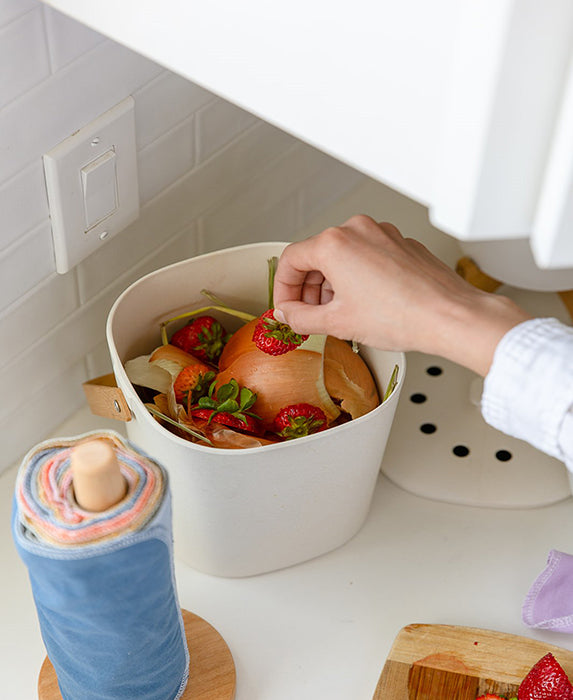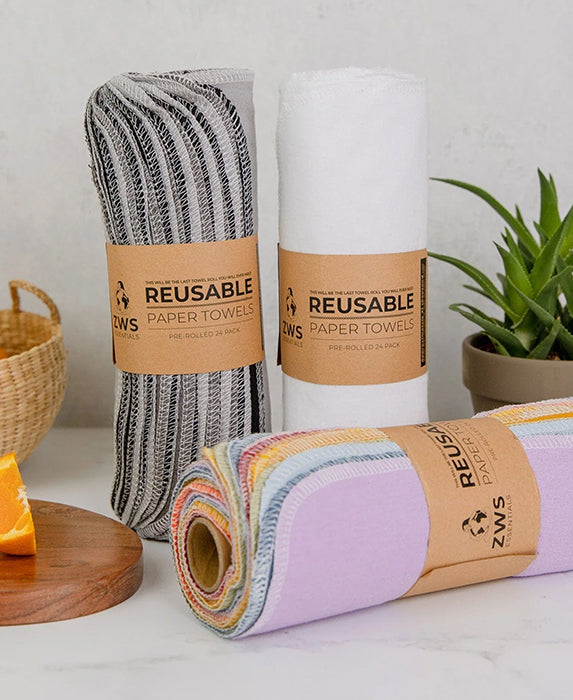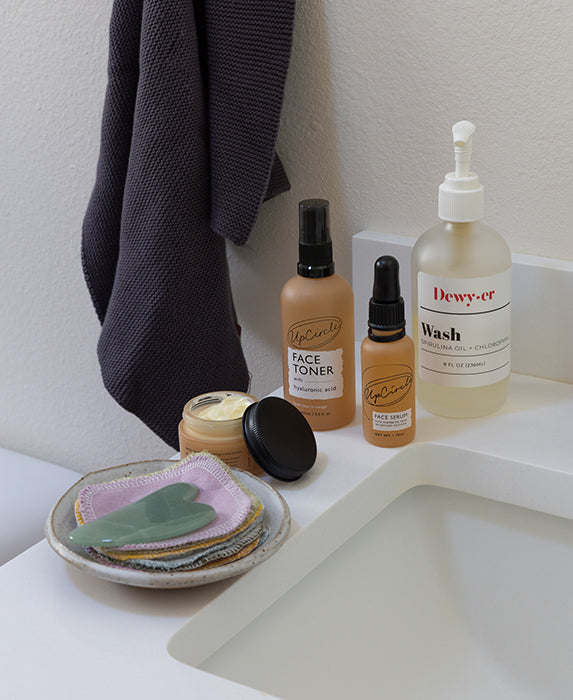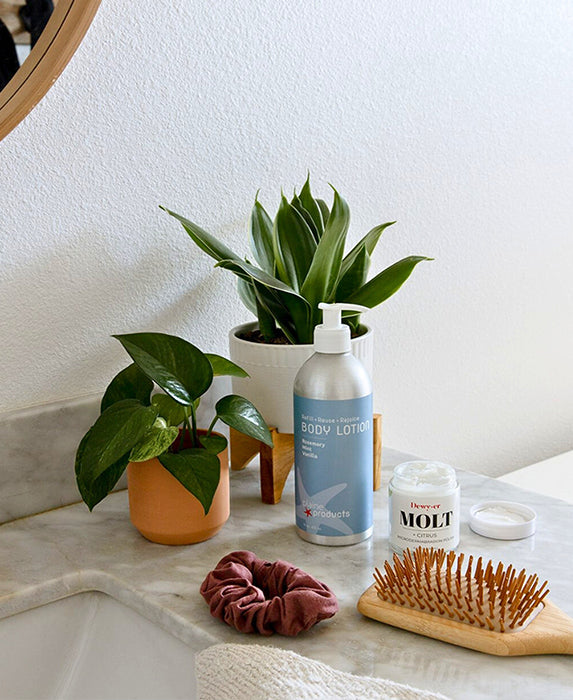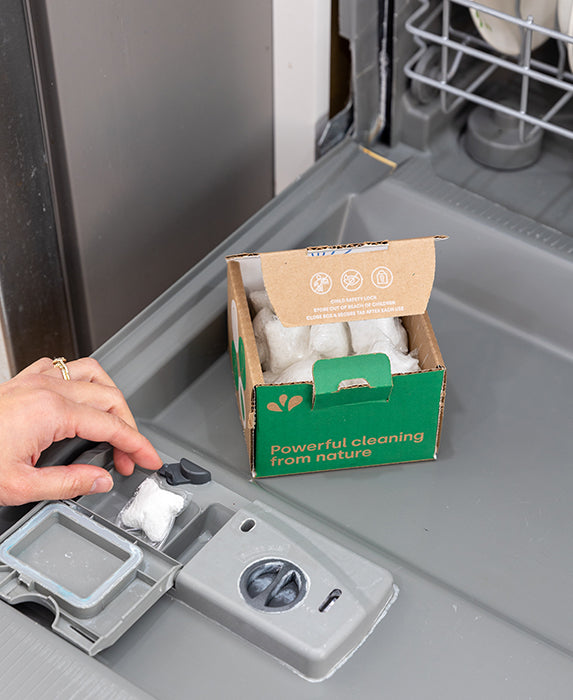When it comes to understanding compostable vs biodegradable and what the difference is, it can be tricky–it seems that they’re used interchangeably! But there are huge differences in the two terms, and they can have a bigger impact than you think.
At EarthHero, we want you to have all the necessary information to understand the difference between compostable and biodegradable and be able to discern, on your own, how something can be properly handled at the end of its life! In this article you will learn the distinction between compostable and biodegradable products, and the true meaning behind these terms.
What you’ll learn:
- The difference between compostable and biodegradable
- When to compost something, and when to toss it
- Some of our favorite biodegradable and compostable products
What’s the Difference?

While both ‘compostable’ and ‘biodegradable’ refer to the breakdown of a material by microorganisms, there is one important distinction that separates the two: when something is compostable, it adds nutrients to the soil when it breaks down – aka, it can be used as compost. Some biodegradable waste is compostable, but some isn’t – meaning that the terms aren’t interchangeable!
Another important distinction to make is that biodegradable materials don’t have to be under special conditions to degrade, whereas compost degradation must be closely monitored to ensure the proper ratio of carbon to nitrogen, so that it can be used as effective natural fertilizer after the composting process is completed.
About Compostable Materials
Compostable materials are very similar to biodegradable materials, but what sets compostable materials apart is that they are able to be used as fertilizer or another soil additive after they’re done fully composting. So compost actually helps soil, while biodegradable materials don’t always improve soil quality and fertility. Compost also acts as a natural pesticide in soil–how cool is that! Compostable materials sometimes require macro organisms like earthworms to break down the organic materials, with helps to fortify the compost with nutrients.

It is important to note: for certain compostable materials (think certain plant based ‘plastics’ like World Centric) to actually become beneficial and fully break down, they must be treated in an industrial composting facility where the conditions are right for compostable materials to turn into nutrient-rich soil.
On the other hand, putting compostable materials in the trash takes away from the benefits of composting. When compostable materials end up in landfills, they are often covered up and lack the necessary oxygen needed in order to break down in a sustainable manner. Compostable materials need to breathe! In an anaerobic environment (the landfill), compostable materials release methane into the atmosphere as they decompose. Methane gas is a 30 times more potent and consequential greenhouse gas than carbon dioxide is!
In order for a material to pass the compostability standards in the United States, there are four criteria that must be met:
- Biodegradability – the material must degrade up to 90% within less than six months.
- Disintegrability – which refers to the largest size of fragmentation that is allowed after three months of composting.
- Impact – The materials being composted must not negatively affect the final compost product.
- Toxicity – The materials being composted must not contain a higher level of certain substances before and after undergoing decomposition.

Meeting all of these requirements ensures that compost is nutrient rich, organic, and able to fertilize soil effectively. To ensure your products are compostable, look for labels like these – or other third-party certifications.
About Biodegradable Materials
Biodegradable materials include anything that can be broken down by microorganisms. For something to truly be biodegradable it must break down and decompose into natural elements, usually within less than a year.

Even though this is the proper definition for biodegradable, the word gets put on many products that will not biodegrade in under a year. This is the tricky part about the term biodegradable; plastics and many other products will eventually break down, but over hundreds of years, making them not truly biodegradable. And as we know, that does not mean they are safe for the planet. Instead, they just pile up in landfills.
It can also be very difficult to tell how long it will take for plastic to break down because they are all made of different materials. Additionally, there are no regulations monitoring the types or amounts of toxic residue that can be left behind once these plastics do biodegrade. You may even see plastics labeled as “oxo-degradable” or “omni-degradable”, meaning there have been chemicals added to the plastic to allow it to break down faster – but the jury’s still out on just how well these items break down in the natural world.
Biodegradable materials are not always compostable because some of them contain toxins that would harm soil quality. Biodegradable materials do not require any special conditions in order to degrade, and can degrade in any environment, therefore they are broken down both aerobically and anaerobically.

While biodegradable materials may not be beneficial to the Earth like compostable materials are, they are still much better than non-biodegradable alternatives. Even though these items may end up in landfills, under the right conditions they can decompose and make more space for other trash, while non-biodegradable materials can stay on Earth for decades.
Compostable + Biodegradable Products
There are some great companies creating biodegradable or compostable alternatives to everyday products. Whether you’re working on a home compost pile, or filling a compost bin to be taken to a compost facility, there are different types of compostable and biodegradable products that would work for you.
From compostable cotton swabs to commercially compostable Ziploc alternatives and even biodegradable hair ties (“regular” hair ties are made of petroleum and never break down!) To learn if an EarthHero product is compostable or biodegradable (or neither) simply scroll down to the sustainability features on each product page, and read the End of Life.
The bottom line is that there is a difference between compostable vs biodegradable, even though they are often accidentally used interchangeably. Compostable materials give nutrients back to our environment after being properly disposed of, making them the best for our planet! Biodegradable items will eventually (if accurately labeled) degrade over a long time making them of course better than non-biodegradable. What’s your two cents? Leave your thoughts below!

